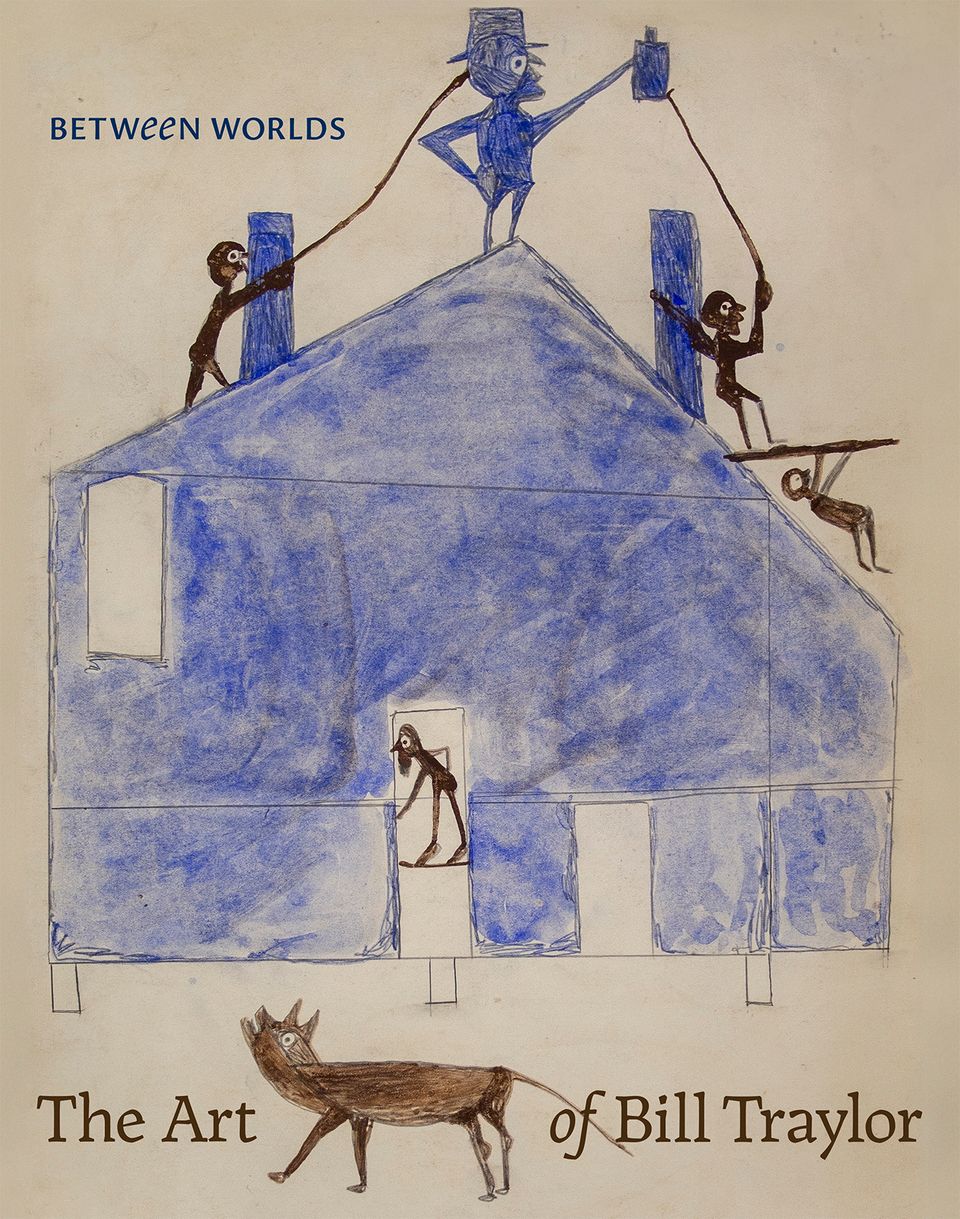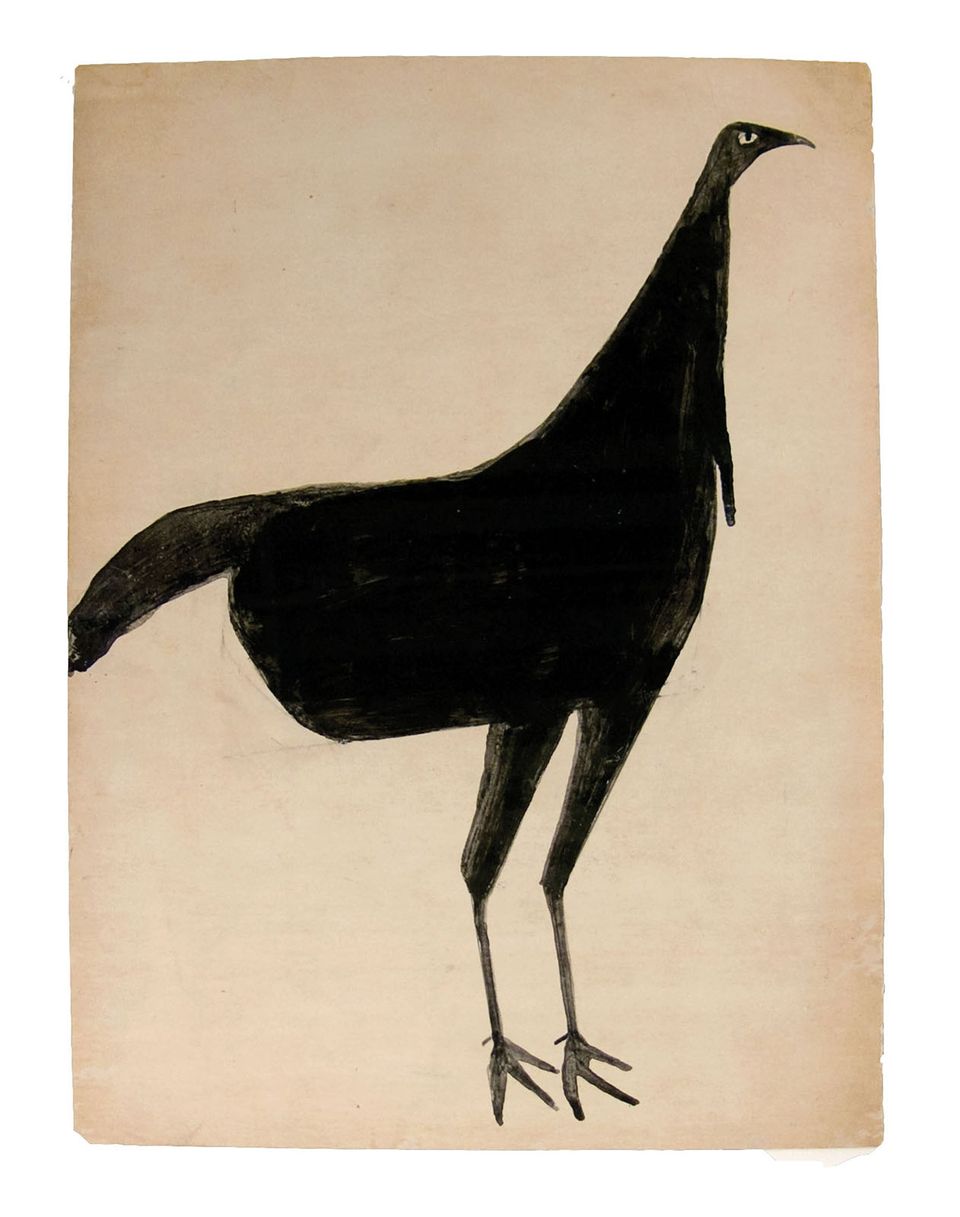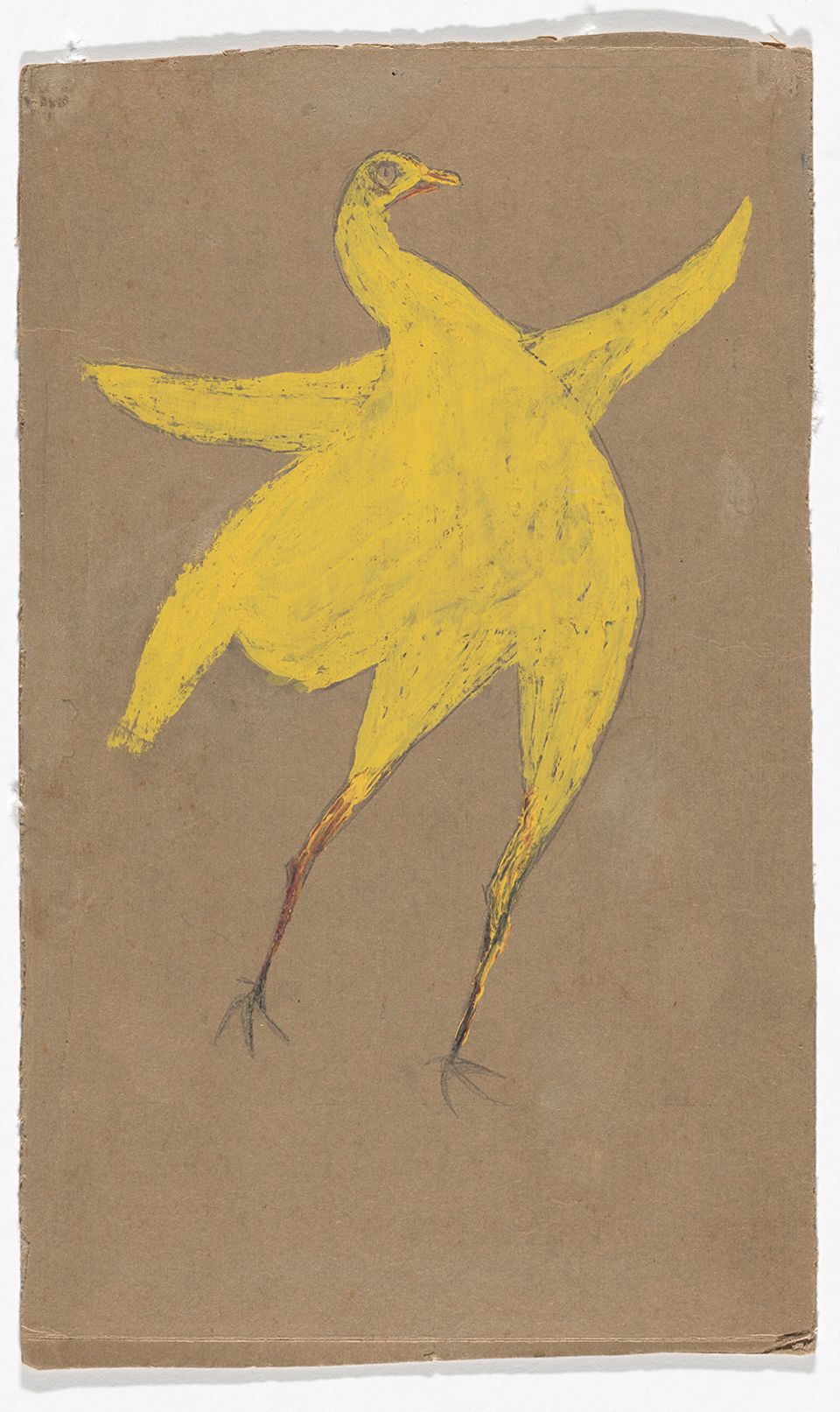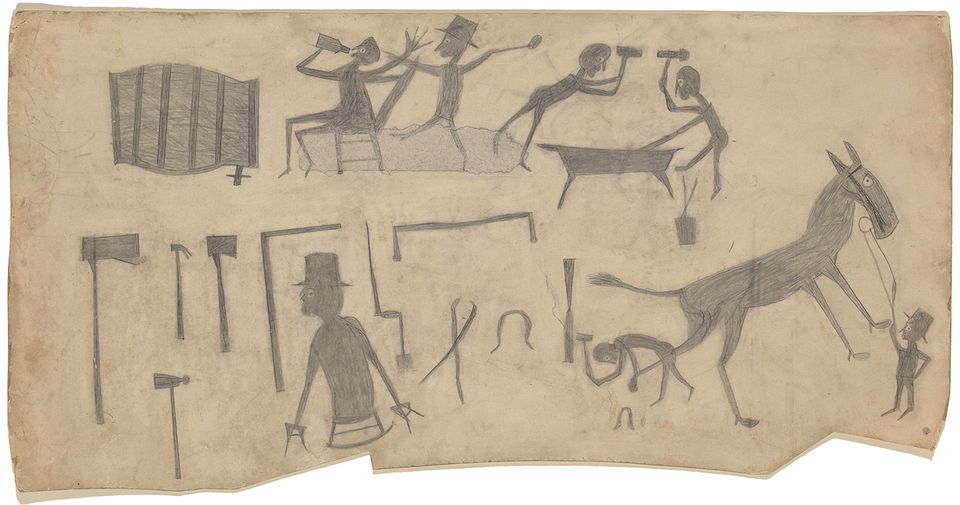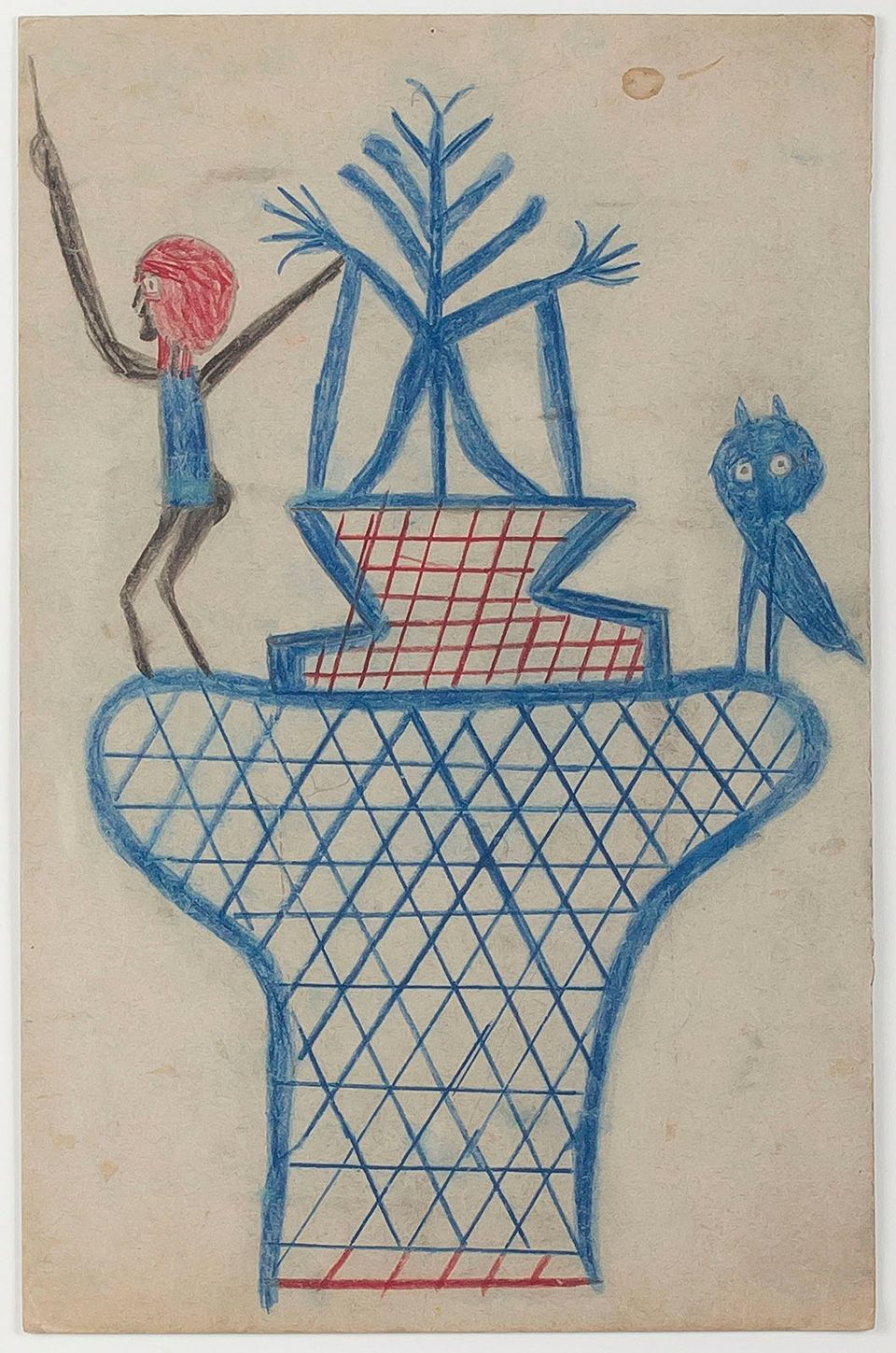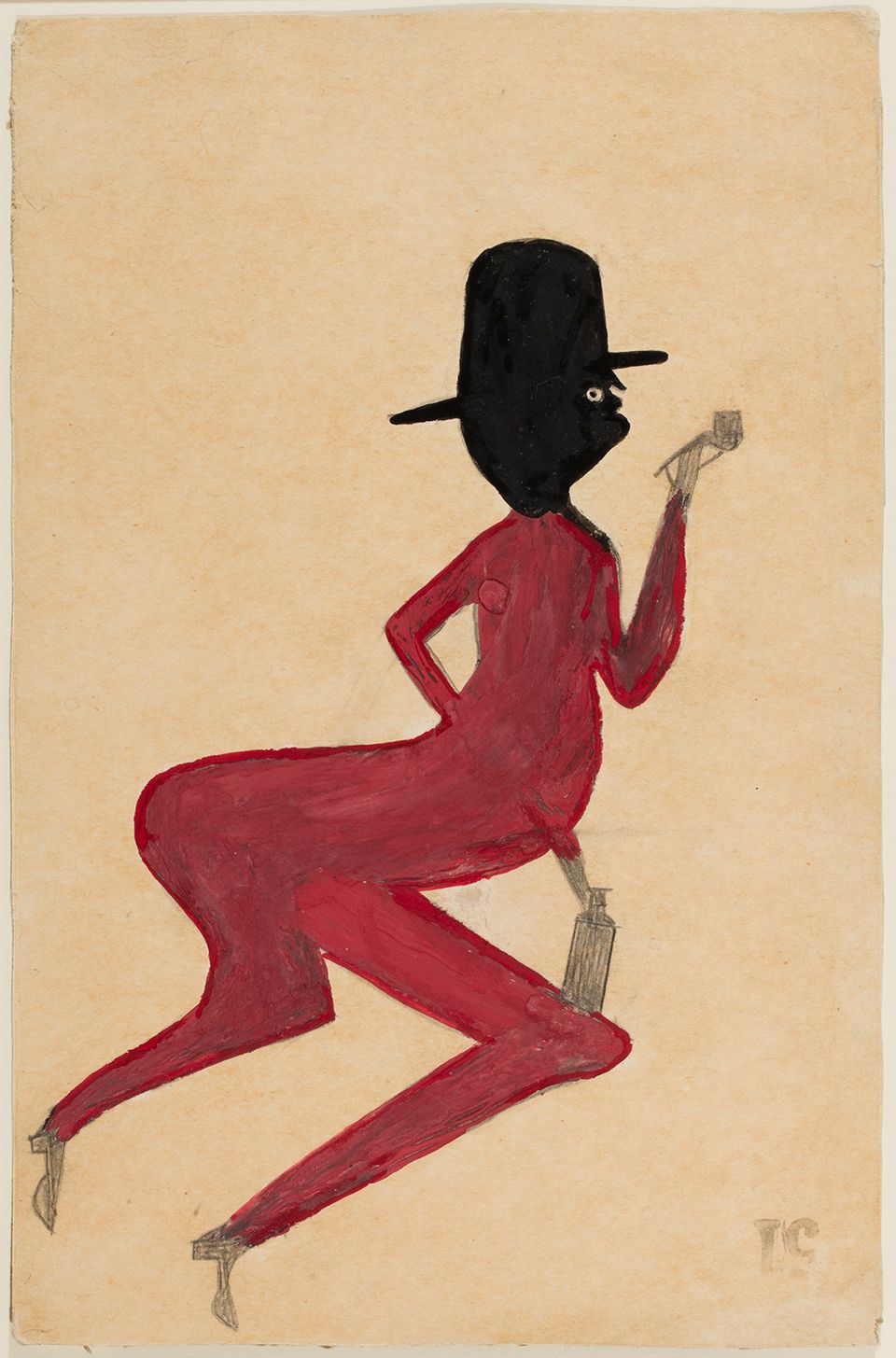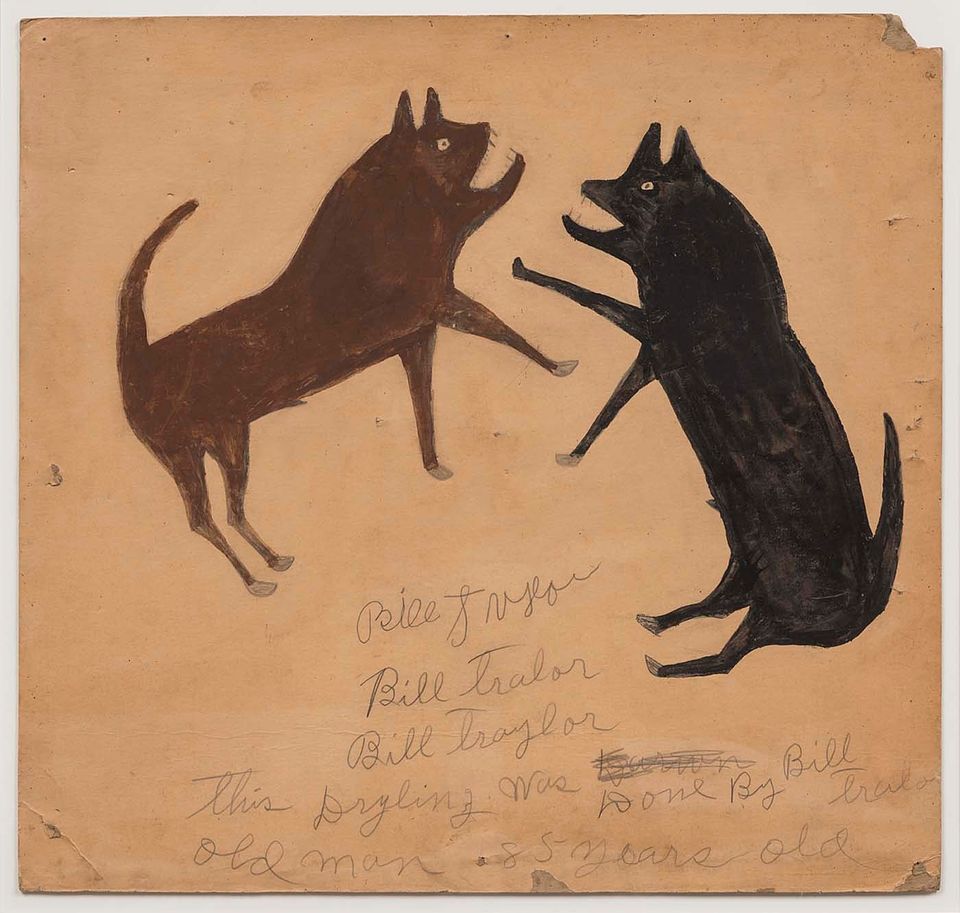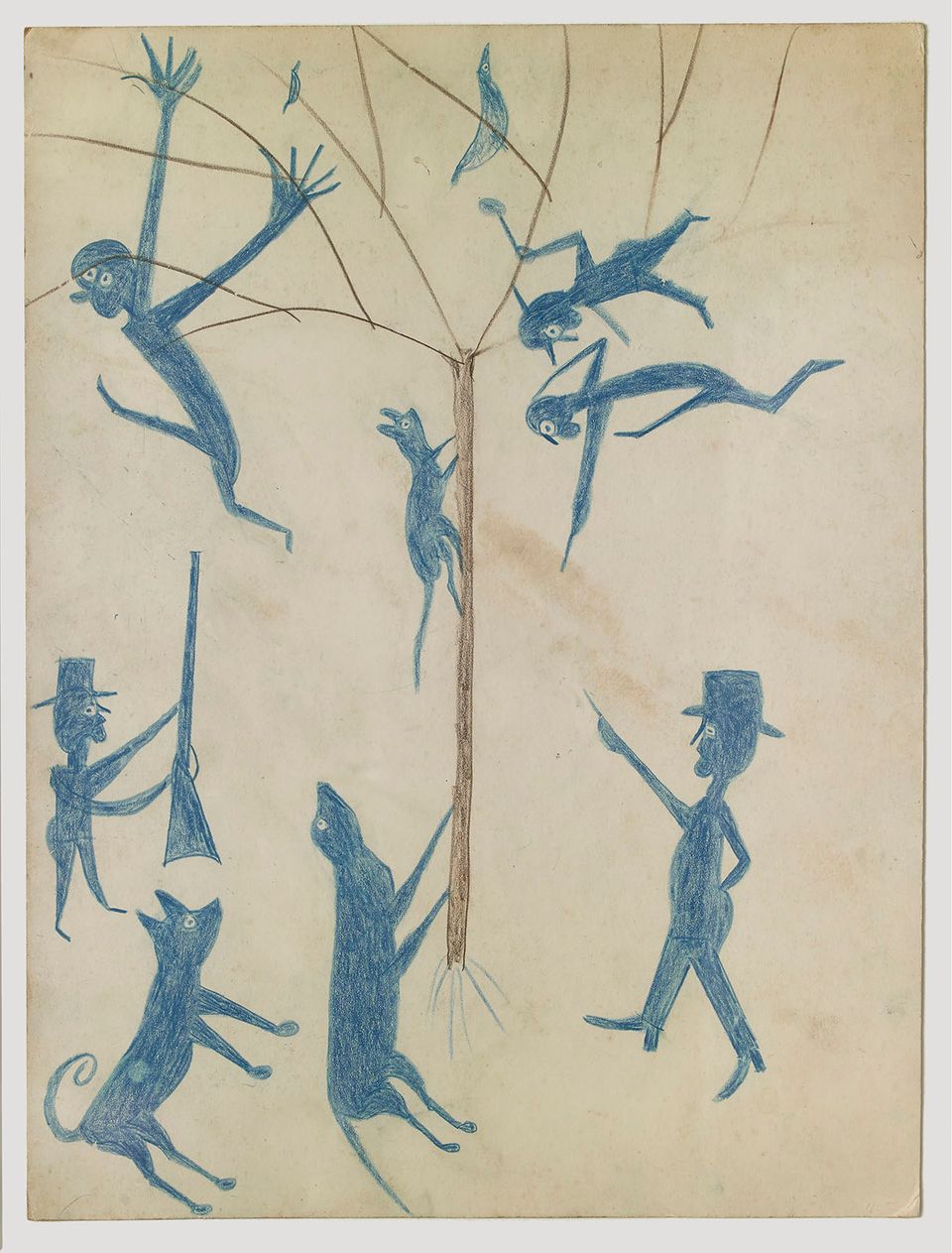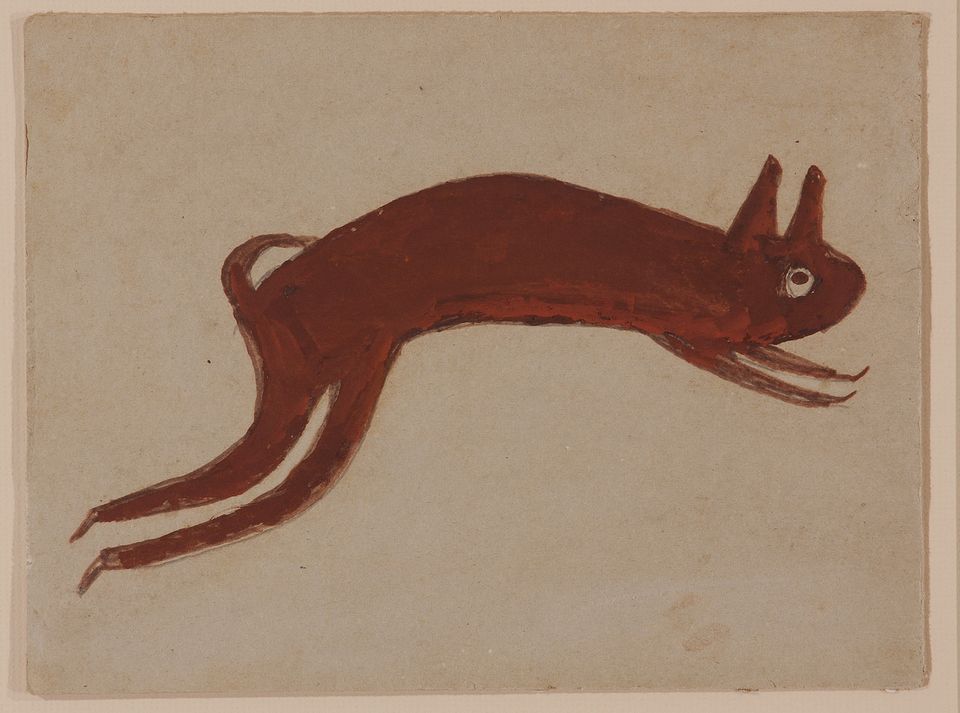Between Worlds: The Art of Bill Traylor
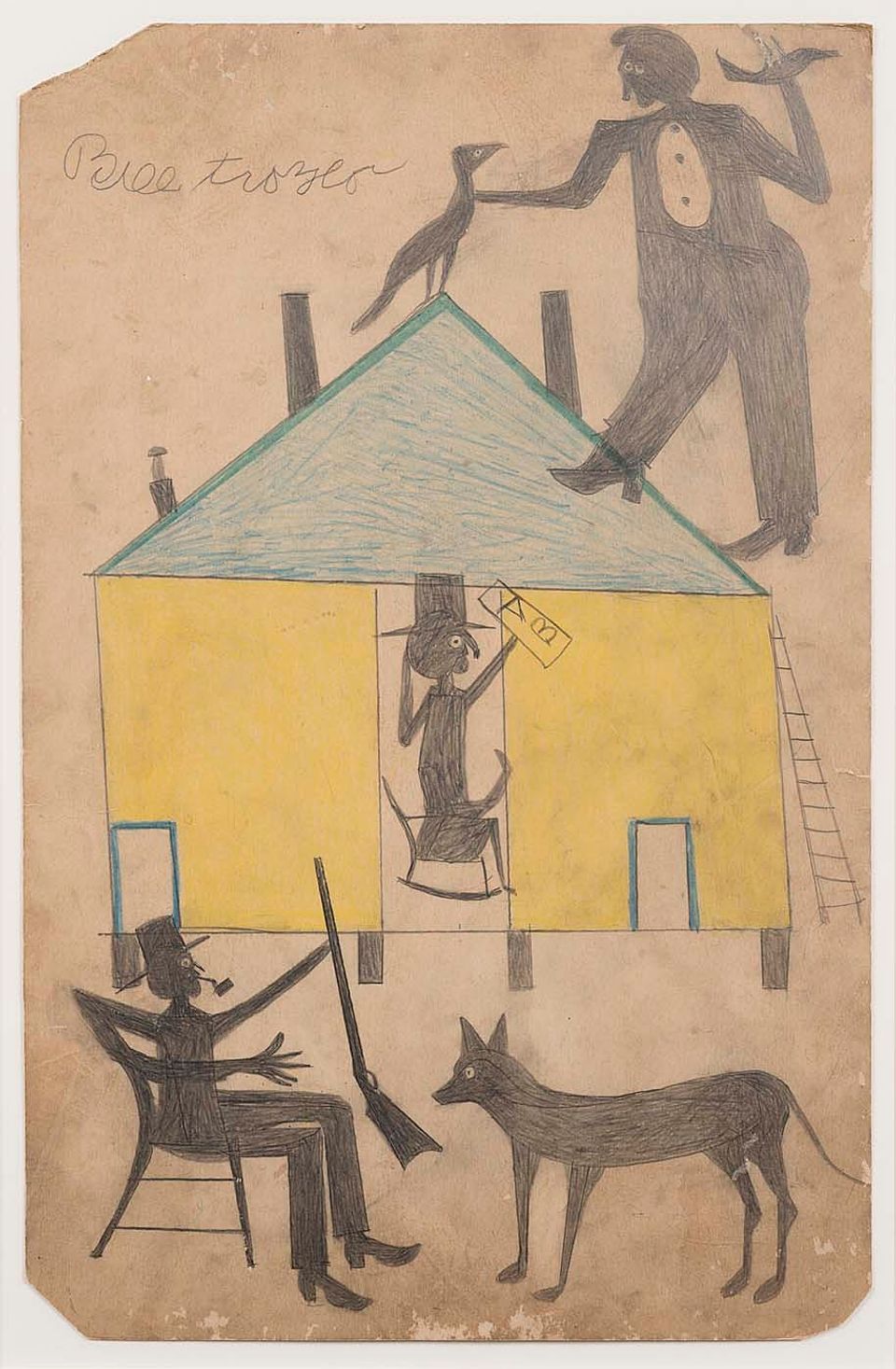
Bill Traylor, Untitled (Yellow and Blue House with Figures and Dog), July 1939, pencil and colored pencil on paperboard. Smithsonian American Art Museum; Museum purchase through the Luisita L. and Franz H. Denghausen Endowment © 1994, Bill Traylor Family Trust. Photo by Gene Young
Between Worlds: The Art of Bill Traylor is the first major retrospective ever organized for an artist born into slavery, and the most comprehensive look at Bill Traylor’s work to date.
Bill Traylor (ca. 1853 – 1949) is regarded today as one of the most important American artists of the twentieth century. A black man born into slavery in Alabama, he was an eyewitness to history: the Civil War, Emancipation, Reconstruction, Jim Crow segregation, the Great Migration, and the steady rise of African American urban culture in the South. Traylor would not live to see the civil rights movement, but he was among those who laid its foundation. Starting around 1939 — by then in his late eighties and living on the streets of Montgomery — Traylor made the radical steps of taking up pencil and paintbrush and attesting to his existence and point of view. The paintings and drawings he made are visually striking and politically assertive; they include simple yet powerful distillations of tales and memories as well as spare, vibrantly colored abstractions. When Traylor died in 1949, he left behind more than one thousand works of art.
Description
The simplified forms of Traylor’s artwork belie the complexity of his world, creativity, and inspiring bid for self-definition in a segregated culture. Between Worlds: The Art of Bill Traylor situates Traylor as the only known artist enslaved at birth to make a significant body of drawn and painted work. His compelling imagery charts the crossroads of radically different worlds—rural and urban, black and white, old and new—and reveals how one man’s visual record of African American life gives larger meaning to the story of his nation.
The exhibition is organized by Leslie Umberger, curator of folk and self-taught art at the Smithsonian American Art Museum. The Museum’s collection includes seventeen works by Traylor, fourteen of which have been acquired since 2015. Between Worlds features 155 of Traylor’s most important paintings and drawings; in the accompanying monograph, Umberger examines over two hundred works to provide the most in-depth study of the artist to date. The Smithsonian American Art Museum is the sole venue for this major retrospective.
Visiting Information
Publications
Videos
Audio
Credit
This exhibition is organized by the Smithsonian American Art Museum with generous support from ART MENTOR FOUNDATION LUCERNE, Elizabeth Broun, Faye and Robert Davidson, Sheila Duignan and Mike Wilkins, Josh Feldstein, Jocelin Hamblett, the Herbert Waide Hemphill Jr. American Folk Art Fund, Just Folk/Marcy Carsey and Susan Baerwald, Lucas Kaempfer Foundation, Marianne and Sheldon B. Lubar, Margery and Edgar Masinter Exhibitions Fund, the Morton Neumann Family Foundation, Douglas O. Robson in honor of Margaret Z. Robson, Jeanne Ruddy and Victor Keen, Judy A. Saslow, and Kelly Williams and Andrew Forsyth.
SAAM Stories


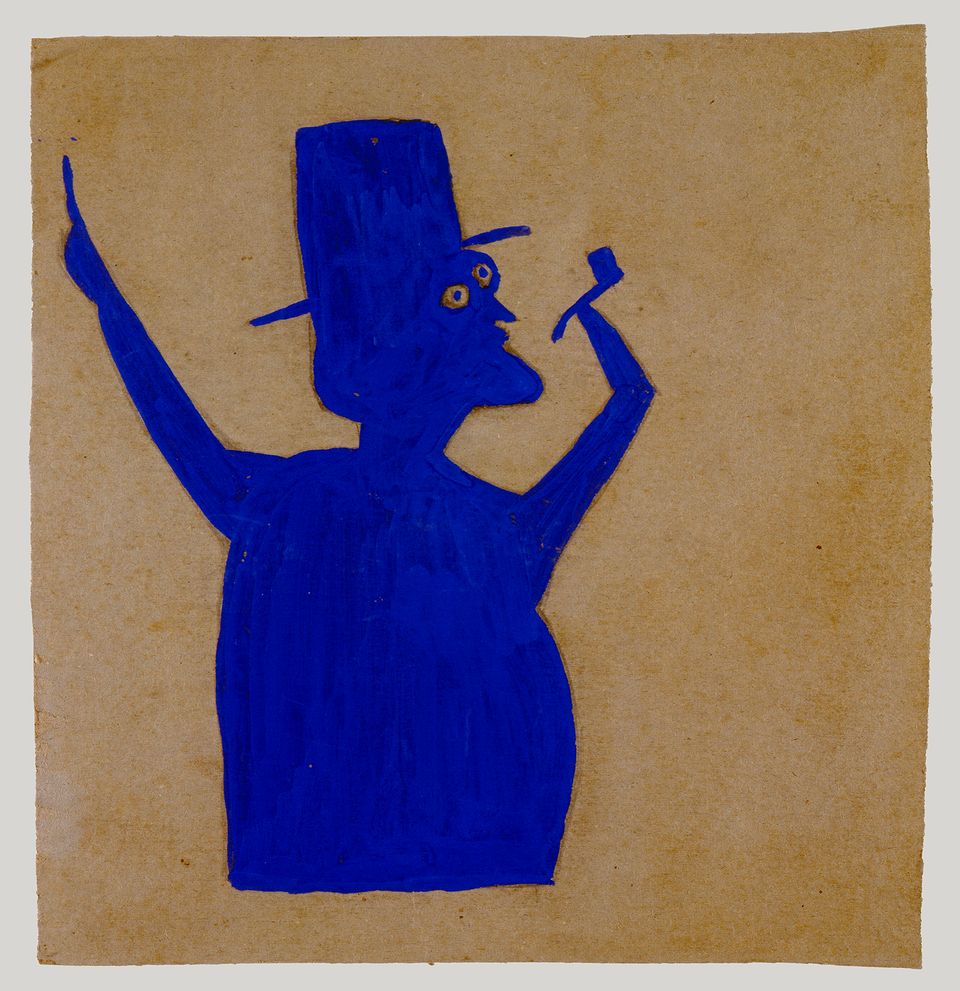
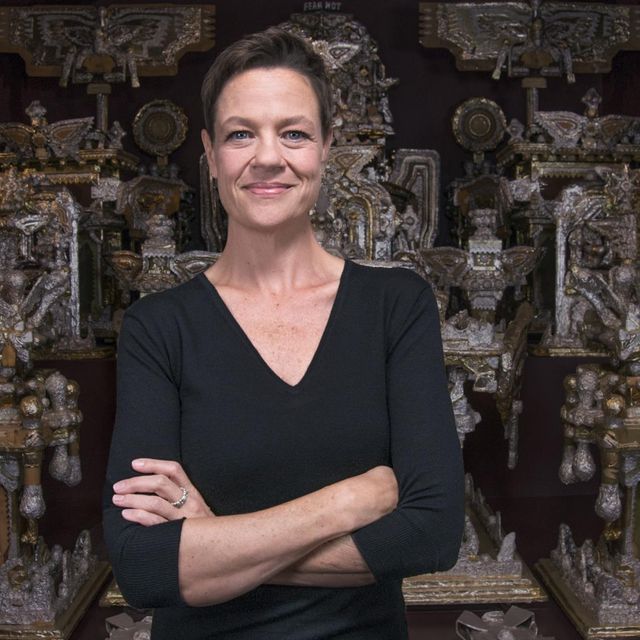
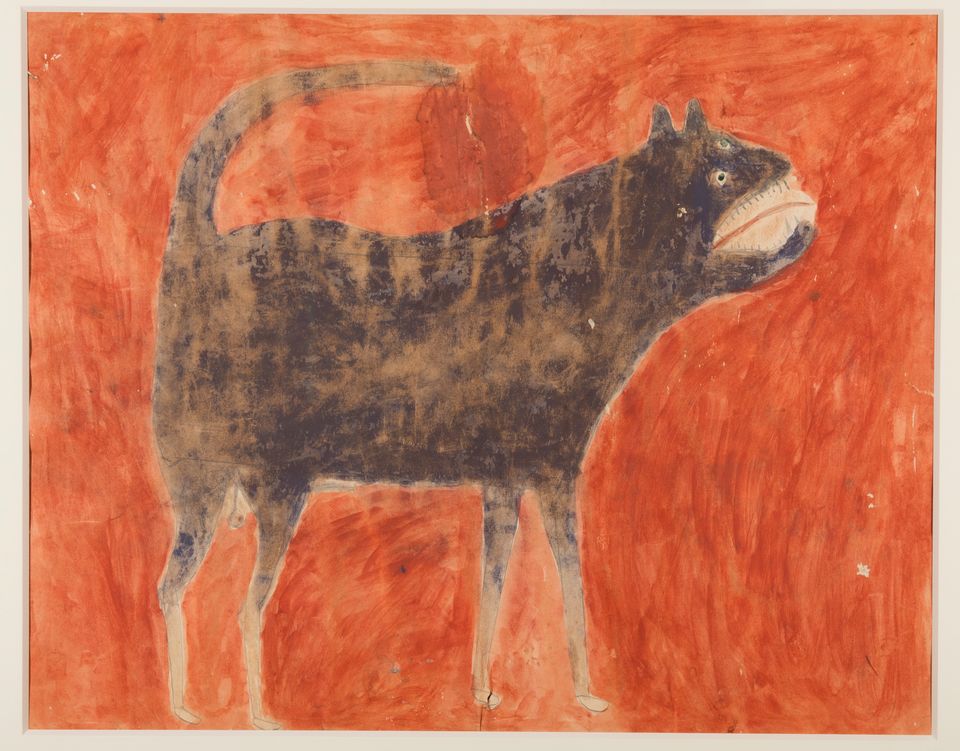

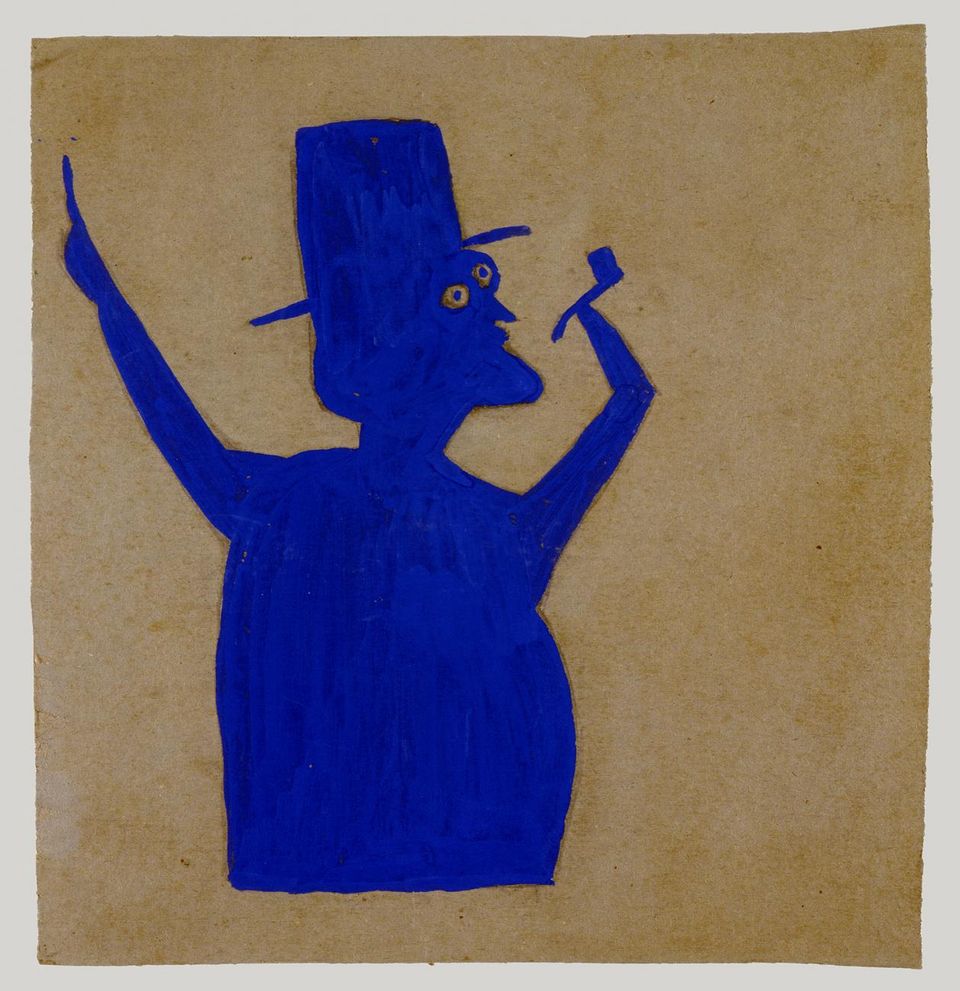
Bill Traylor (ca. 1853–1949) is among the most important American artists of the twentieth century.

“A stunning retrospective at the Smithsonian American Art Museum.… an extraordinary artist, making magnetically beautiful, dramatic, and utterly original drawings.”
-Peter Schjeldahl, The New Yorker
“When [Traylor’s] work is gathered together, one sees the overwhelming ambition of it. Traylor wasn’t just making images, he was creating a world”
-Phillip Kennicott, The Washington Post
Online Gallery
Artists
Bill Traylor was born around April 1, 1853, on the Alabama plantation of John Getson Traylor in Dallas County, near the towns of Pleasant Hill and Benton. Traylor and his siblings were born enslaved, as their parents had been.














